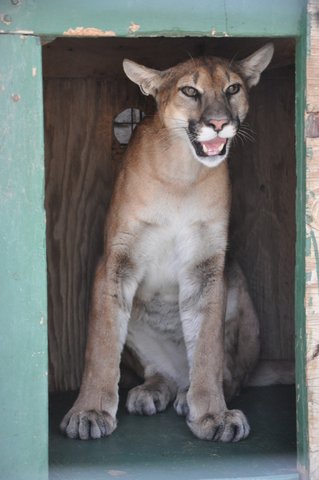
|
The cat of many names, also called puma, mountain lion, panther, painter, catamount, American lion, deer tiger, brown tiger, and night screamer. The Florida panther and Eastern cougar of the United States are both Critically Endangered, all other subspecies are Least Concern. The Florida panther is down to 30-50 animals in southern Florida; one sub-population went extinct in 1991. They are threatened by physiological impairment ascribed to inbreeding depression and by road kill. Several Texas cougars were released in Florida in the past few years to augment this population. The Eastern cougar, occasionally sighted in the Appalachians, New England, and Ontario, survives only in small numbers in highly fragmented ranges. West of the Rocky Mountains cougars are much more numerous. In the past FCC cooperated in breeding research programs investigating in-vitro fertilization, using cougars as the subjects. Fertilized embryos were successfully produced and implanted, although no live births resulted. This program is now suspended while new hormone drugs are developed (the females built up an immunity to the drugs used in previous studies to bring on ovulation, impairing the program's success). Cougars are the western hemisphere's widest ranging cat, living from upper Canada down to the tip of South America. Cats from colder regions are the largest, up to 200 pounds. California, or Western, cougars are average-sized, about 150 pounds for males, 100 pounds for females. These cats live in the mountains here around us. They are pretty shy and it's rare to encounter one, so you're not likely to see one while hiking, but you should never let young children get separated from adults while hiking. |




